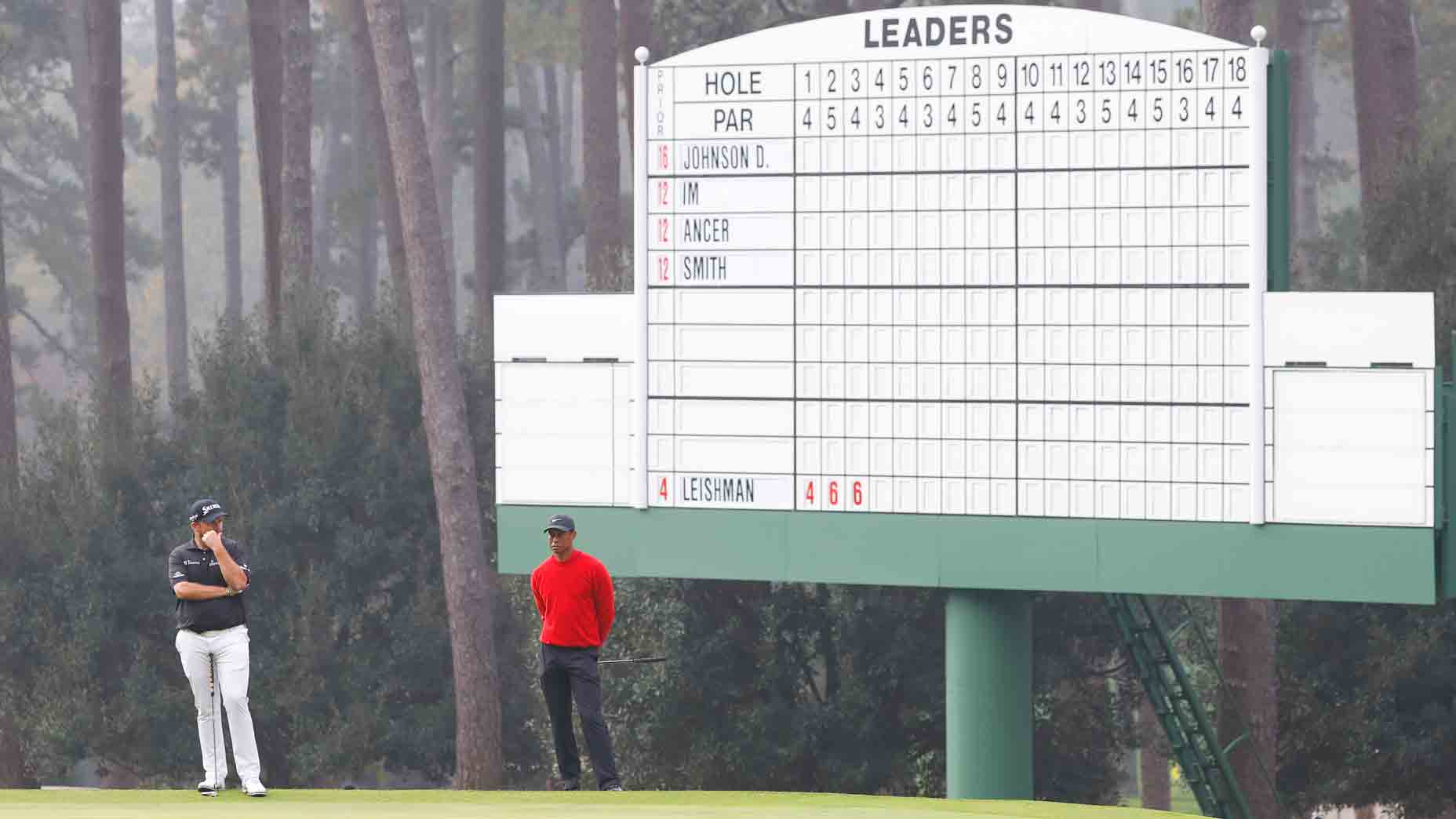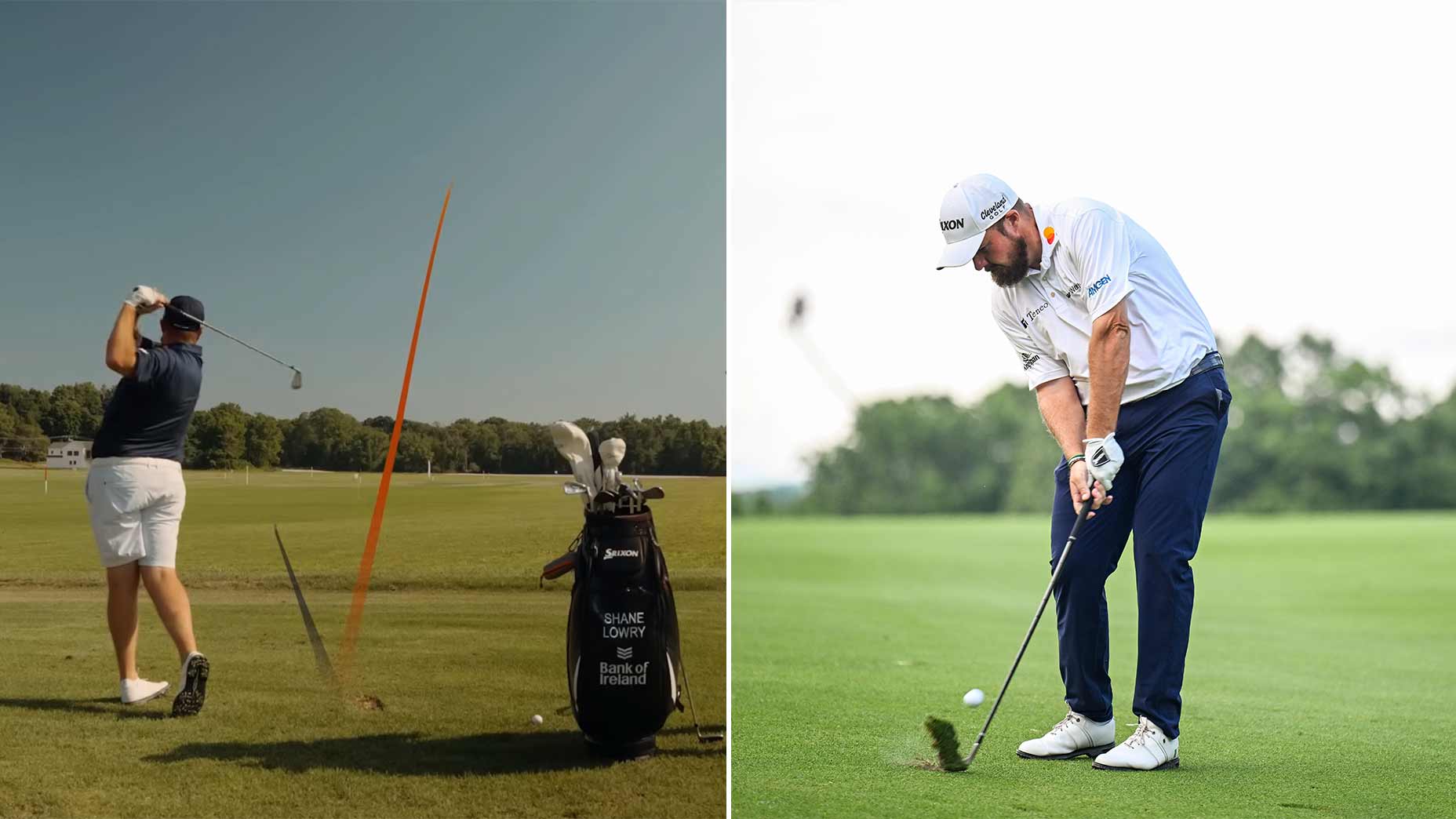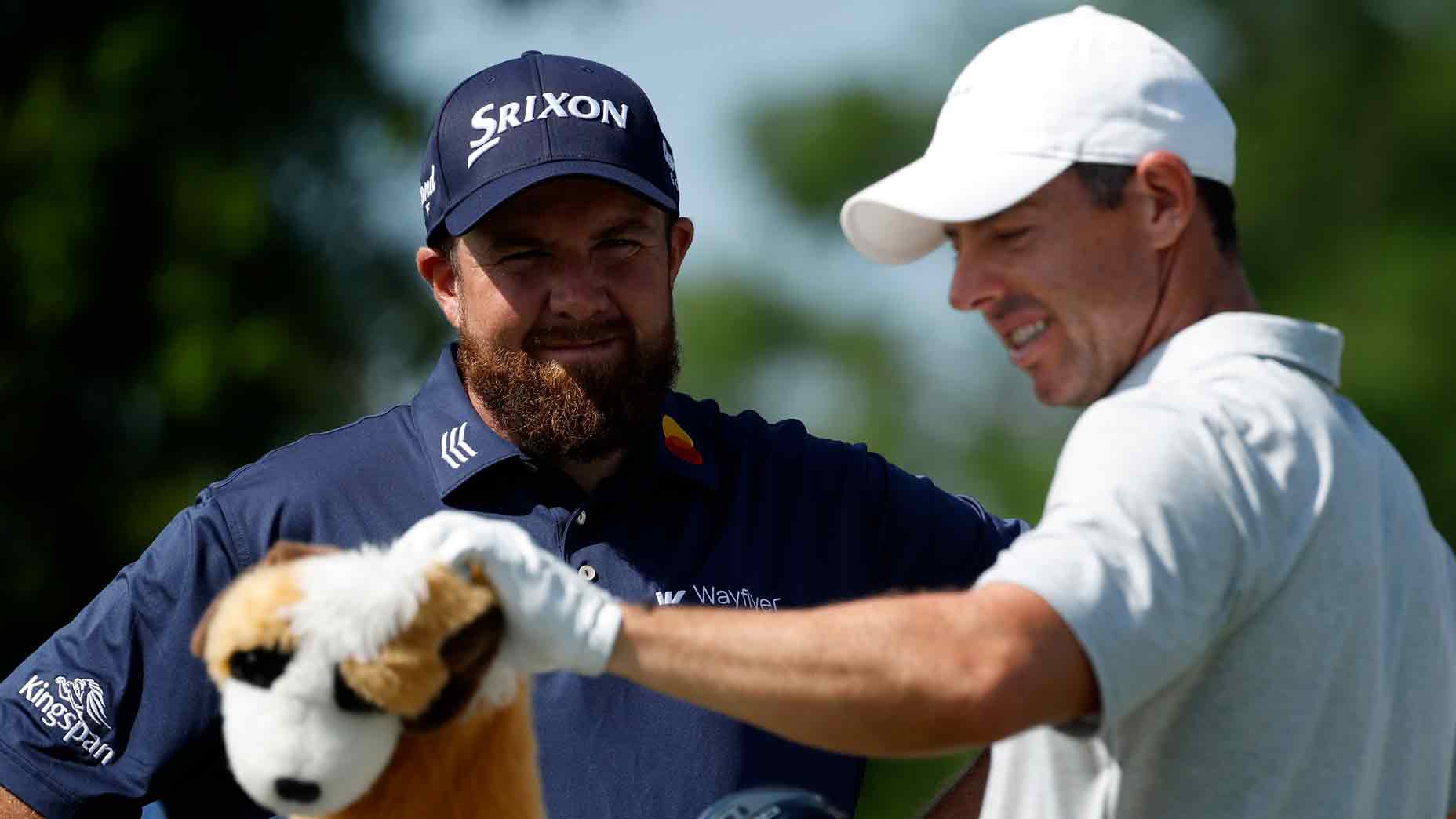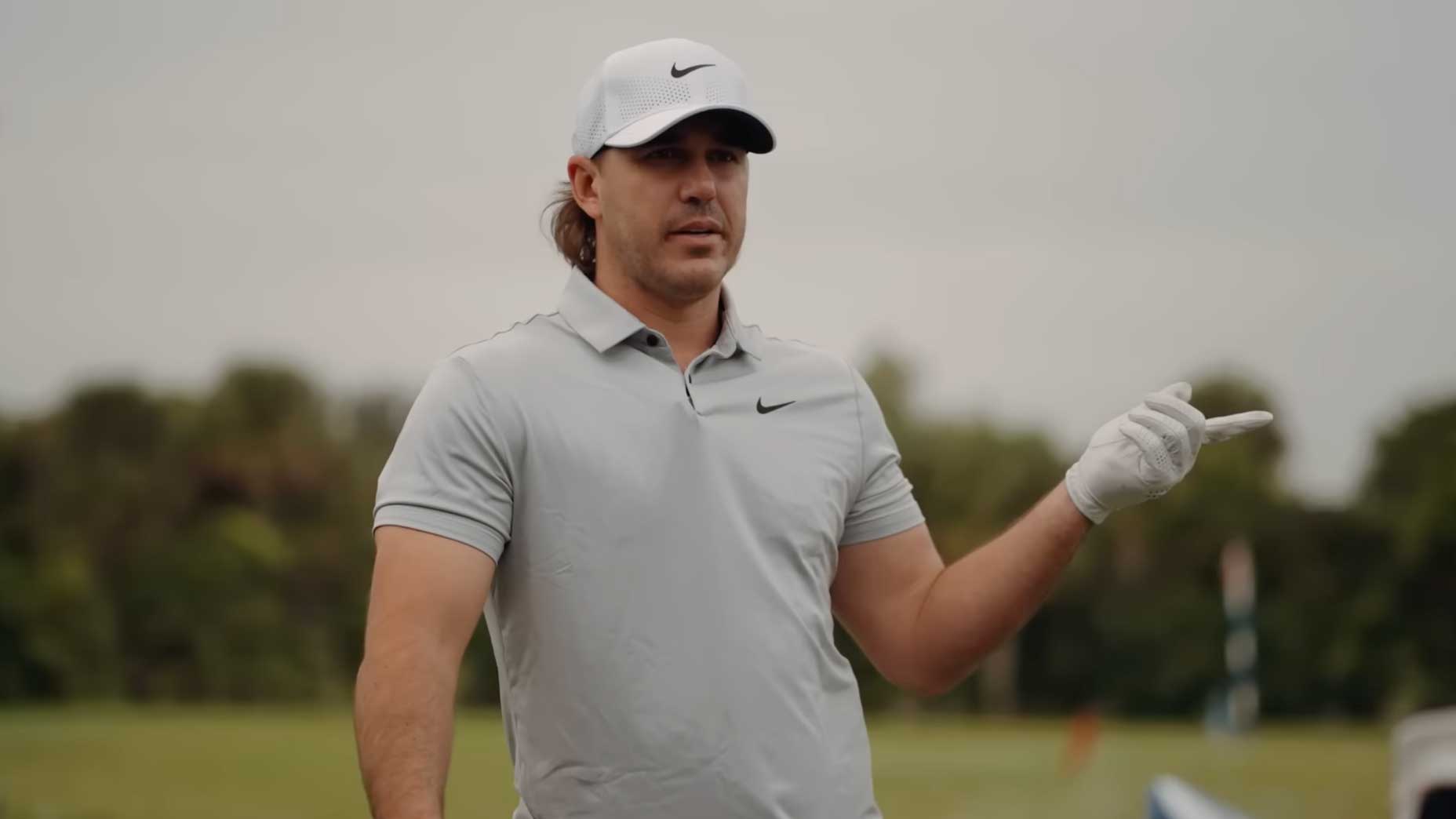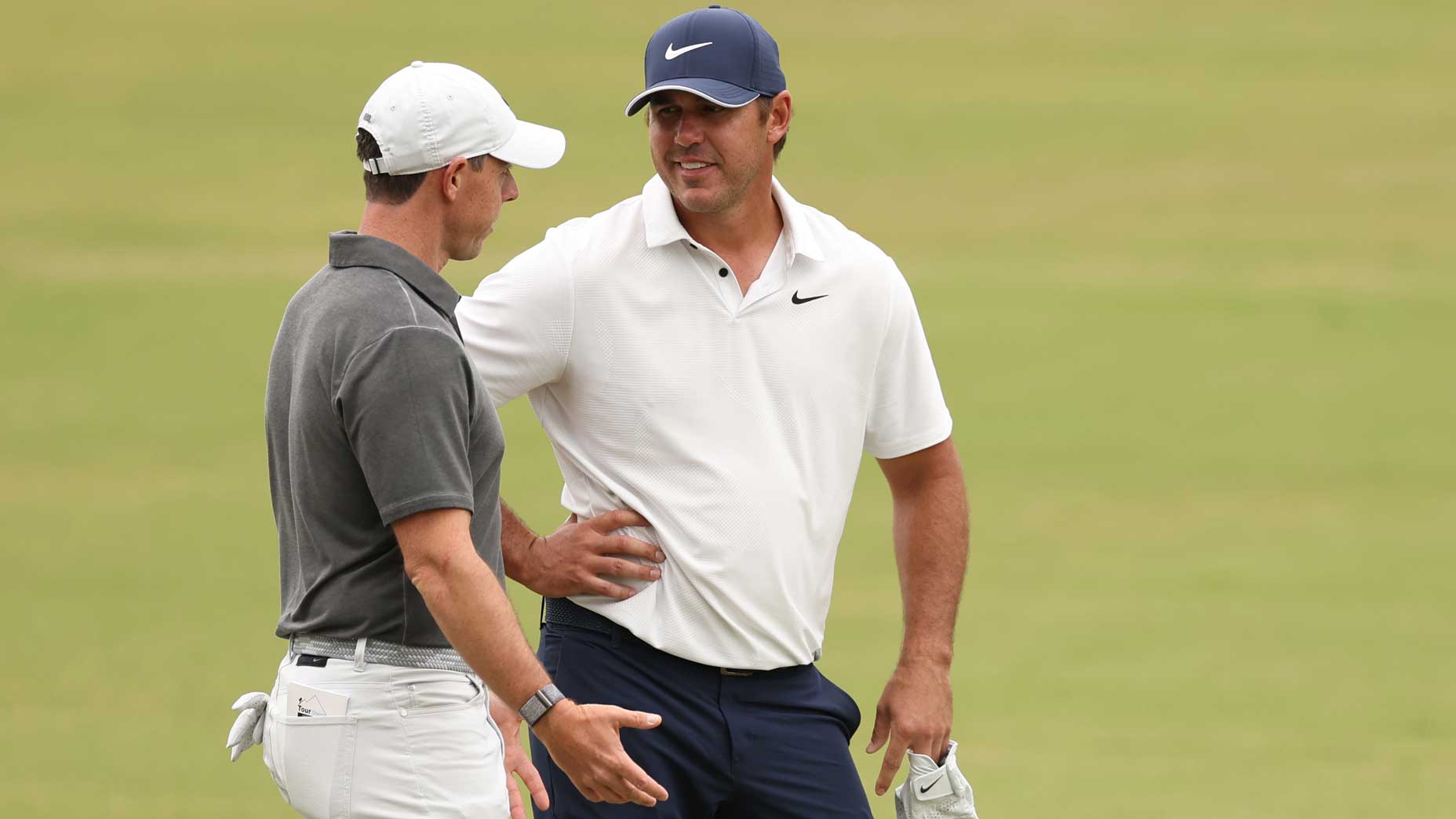Brooks Koepka taught me 10 lessons in 32 minutes. Here they are
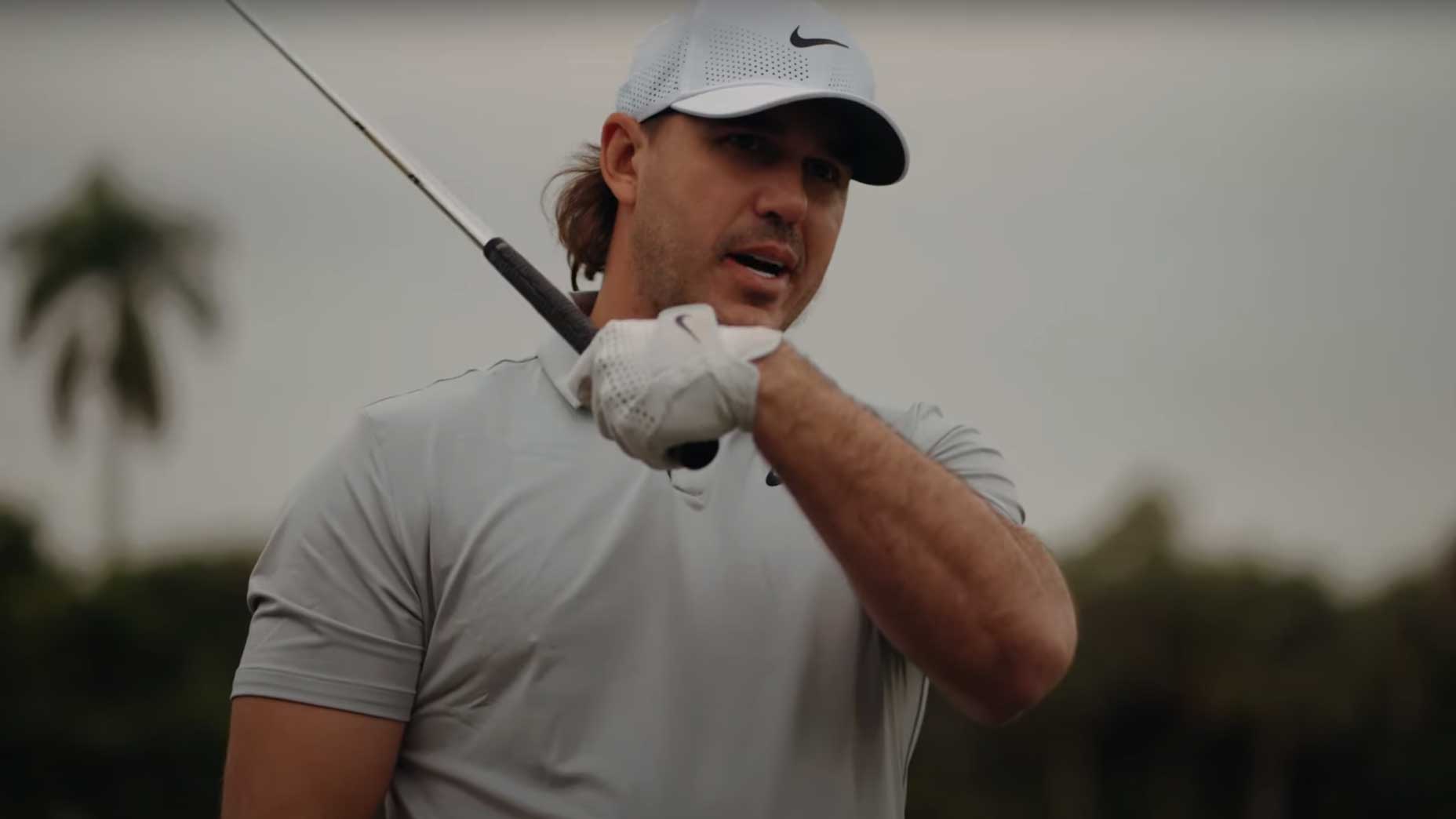
Brooks Koepka taught me a thing or 10.
Darren Riehl
I was slightly nervous about Brooks Koepka.
Maybe nervous isn’t quite right. Apprehensive is probably closer, because it includes some possibility for excitement. I was excited to have Koepka on the range for a half-hour interview talking shop. I was just uncertain whether he’d play ball. The entire conceit of “Warming Up,” our range hangout video series, is to dive deep on golfers’ processes. I wasn’t sure how deep Koepka would be willing to go. I’m not sure he was, either. I guess that’s a good place to start.
Lesson 1: Don’t think about anything.
Koepka hitched a ride to the range with one of our producers and mentioned that he wasn’t going to be very good at this. Once the cameras started rolling he reiterated something similar.
“Honestly, you’re not going to like this answer, but I don’t think of anything,” he said as he hit his first 56-degree wedge.
I think he assumed that nothing would be a rally-killer. Conversation over. But the idea of nothing — that was interesting. That was fascinating. When we think of the best golfers on the planet we tend to assume that they’re operating on a higher plane than we are, that they know more about the golf swing, that they possess some secret we won’t ever know. But for Koepka the secret is the ability to boil it all back down, to simplify things, to quiet his mind. Not thinking about anything is golf’s holy grail. Say more, Brooks…
Lesson 2: Don’t sweat a bad warmup.
If you ever feel stressed during a bad warmup, just remember that Koepka had two of the his worst warmups on memory — and went on to win his fifth major championship.
“This year at the PGA, Saturday and Sunday was the worst warmup I’ve had in a long time,” Koepka said. “You’re like, wow, those shots are really, really poor. The flights on ’em — I’m a fader of the ball, so they might be drawing. The divots were steep. It just wasn’t good. But at the same time, it really doesn’t matter. It’s just a warmup session. I feel good. Shouldn’t have an issue with it.”
Lesson 3: It’s okay to be an odd guy.
In this case “odd guy” has a very literal application; Koepka hits only his odd irons when he’s practicing. The 9. The 7. The 5.
“Honestly, you’re gonna laugh, my caddie gets driven nuts by this, but all the odd clubs wear out so quick,” he said. “The wear spot on those [even] irons is not as good as the other ones. Even when I’m at home practicing I don’t practice with any evens. So it’s the same clubs every single time, that way it’s the same thing every single time.
I tried to clarify: he’s basically never hitting 6-iron except when he’s actually playing on the course?
“Yeah, really, that’s basically it,” he said. So there. Live whatever odd-numbered lifestyle suits you. Especially if you get free clubs every few months.
Lesson 4: Again, don’t think about anything.
This was a good explanation: “I just try to make it a reaction sport,” Koepka said. “Always think about it, right: If you’ve got all the time in the world, you ball up a piece of paper and just chuck it in the trash can, usually goes in. But if you stand there and think about it, more and more — you see it, guys do it all the time, the extra waggle. You’re like, oh boy. This isn’t going to be good. You can tell they’re uncomfortable. Make it a reactionary sport.
Koepka said that reacting to the ball sometimes means he’ll execute a shot in a different way than he might have envisioned; maybe it drew instead of faded but ended up in the right spot.
Lesson 5: Check your fundamentals.
If Brooks Koepka isn’t too good for this, you aren’t too good for this.
“The only thing I do, every single time, I am religious about it: Make sure I’m lined up the same. Grip’s the same. That’s it.”
Koepka lines up left of the target, setting himself up for a fade. If he looks at the target he knows where his feet should be and he knows his shoulders should be slightly left of that. He usually knows, at least.
“If I’m lined up okay, the shoulders are good, the clubface I’m pretty much going to get in the same spot every time, right? My swing, I’ve done the same swing for 27 years, probably, since I [started].”
He emphasizes that this isn’t as easy as it seems. His alignment gets messed up all the time. But that just makes it that much more important to double-check the basics.
“I was taught right when I was coming up by this guy Warren Bottke, he coached me when I was really young: P.G.A. Posture, grip, alignment.”
Koepka’s posture is always about the same. He uses an interlocking grip, slightly weak, and his wrist is slightly bowed at the top of his swing. He’s always chasing perfect alignment. From there? “It’s just turn and burn,” he said.
Lesson 6: Tell yourself there’s someone out there outworking you.
Y’know how Koepka used to imply that he didn’t work particularly hard or practice much between tournaments? It turns out that’s a story he was telling himself, too.
“In my head I don’t work hard enough,” he said. “In my head I’m the laziest guy in the world. But you come practice with me? I’m there quite a bit. Like, I was at Grove [XXIII, in South Florida] before Augusta last year and I think even everyone was getting tired of seeing me there. It was like, all day, every day.”
So why the misdirection, then?
“If you always think you’re not the hardest-working guy it drives you to work a little harder, right? If I always think someone’s outworking me, someone’s better than me, someone’s this, I’m playing catchup. It motivates me to be like, okay, I’ve gotta get to this point, I’ve gotta get to that. And even when you win, it’s still not good enough.”
I pointed out that there might be something slightly wrong with him. He agreed.
Lesson 7: The best Trackman is your eye.
What a quote: The best Trackman is your eye. But that’s what Koepka believes.
“You can get so involved in [launch monitors] that you forget if you hit it a little bit off the toe or a little bit off the heel it can change those numbers quite a bit, from a half-degree. You might think you did something and you might look at it and go oh, wow, this is way different than what I actually saw.”
Koepka says you should trust your eye.
Lesson 8: Don’t think about the consequences.
Koepka recognizes that golf shots can be scary. He just tries to avoid that process.
If I said throw a ball in that bunker right now, you could. But if it was like, life or death, you might start to really think it and question what you’re doing. But that’s — there’s consequences to it. When you’re playing golf, you know there’s a consequence to the shot. Okay, I might lose this golf tournament if I miss the green or I make bogey here. So now you start to get nervous. But if you really don’t think about the consequence — hey, I’m just trying to hit the shot — you’ve done it a million times.”
This, Koepka said, can apply to other high-pressure games.
“I’ll beat you in bags all day long,” he said, holding my gaze. “Ask [Dustin Johnson]. He knows.”
I felt it when he said it.
Lesson 9: You don’t need to curve it like crazy.
Not very often, at least. As our session went on I was struck by just how little Koepka’s ball curved. A yard here, a yard there. He favors a fade, but even that fade just doesn’t fade very much. Finally I asked Koepka to hit a massive slice, just to humor me.
“I’ll just open the hell out of my feet. Just aim way left. And just feel like the clubhead never passes my hands,” he said.
He moves it back a little in his stance and tries to avoid the clubface rotating. Thwack. He sent the shot whirling around the two palms bisecting the range, just like he’d said he would.
I nodded in approval. Did that give him joy, pulling off a shot like that? He shrugged.
“It’s more of like a crowd-pleasing thing. I might hit that shot once every six months because I’m behind a tree or something. But it doesn’t happen that often.”
Lesson 10: On the range, make every ball count.
There are times, Koepka says, that he’ll struggle to reach peak performance.
“I’m awful,” he said. “If I go play with my brother and my dad, I’m lucky to break par. I can’t do it mentally, I can’t get in the same place, I can’t just hit a golf shot for no reason.”
That’s what changes, he says, in the lead-up to major championships. This is, in some ways, the secret to Koepka’s career. The secret to his major domination. The caring.
“When I’m practicing for the majors it’s like, every ball I’m hitting on that range or every putt means something to me. It might not mean anything to anybody else watching, they might never know. But I care so much about that in the lead-up to it. Every ball means something.”
As we stare down another major championship season, it’s safe to assume Koepka has been spending plenty of time on the driving range, hitting shots that matter.
You can (and should!) watch the entire thing below. I hope you like it.
Dylan welcomes your comments at dylan_dethier@golf.com.


